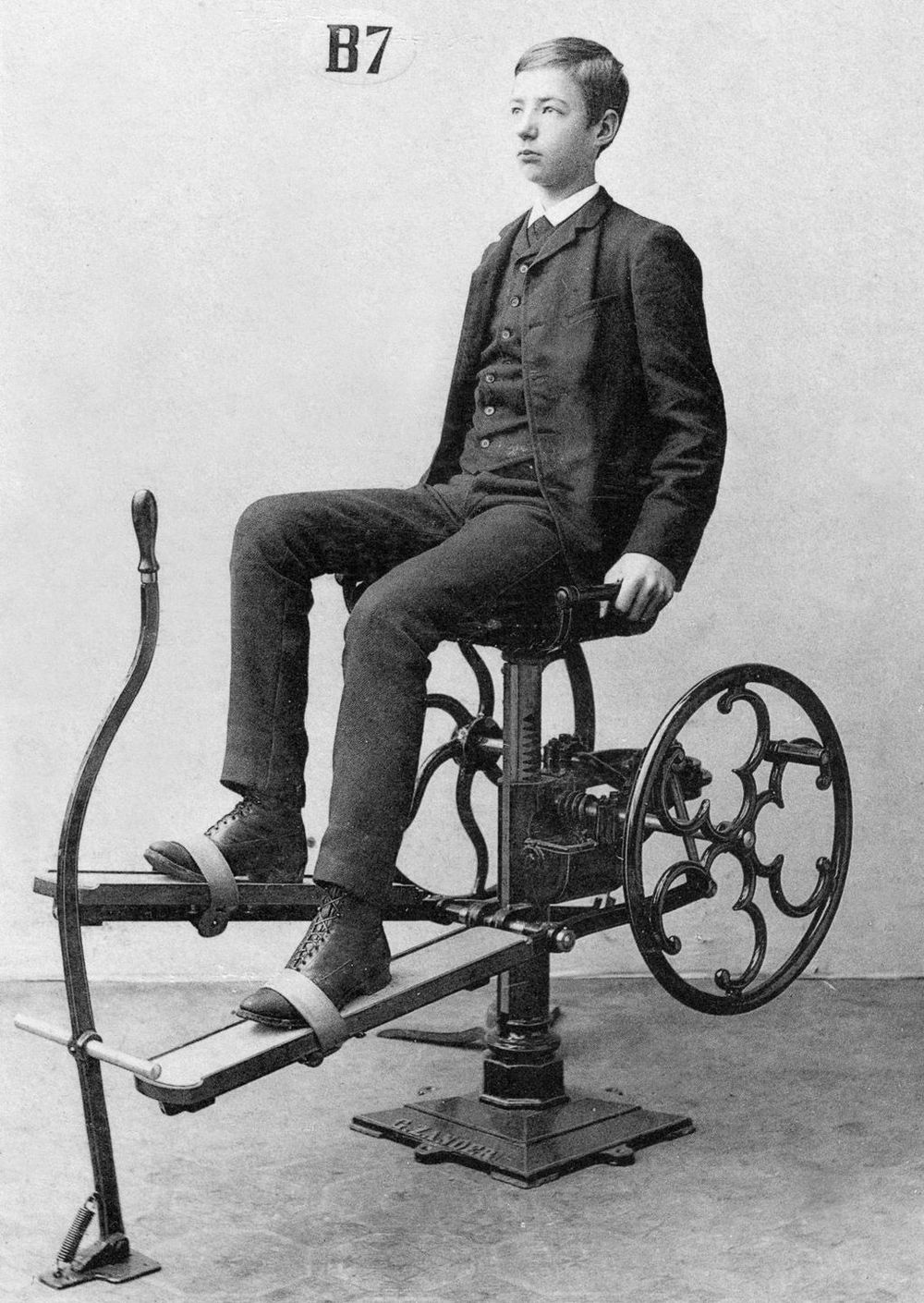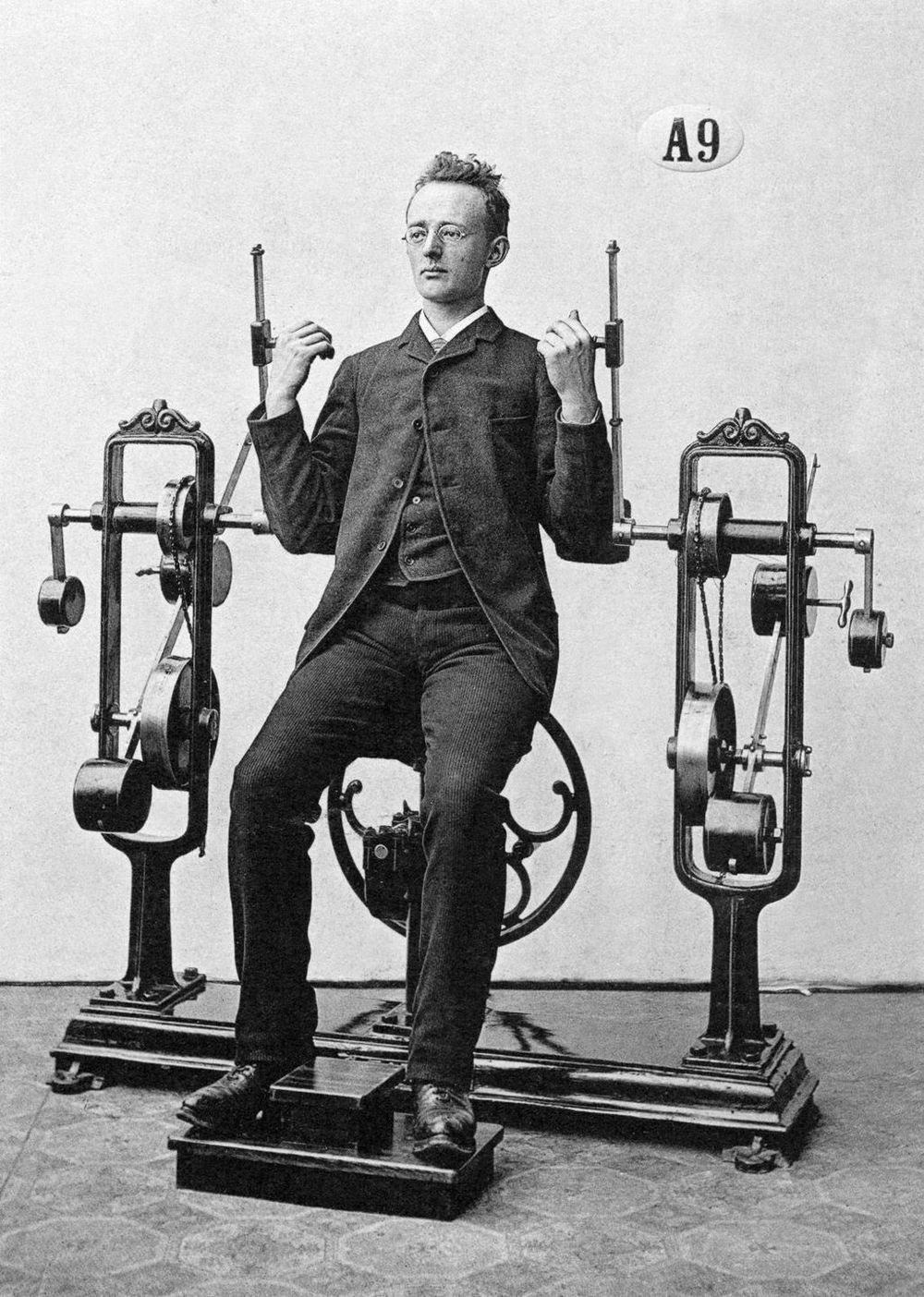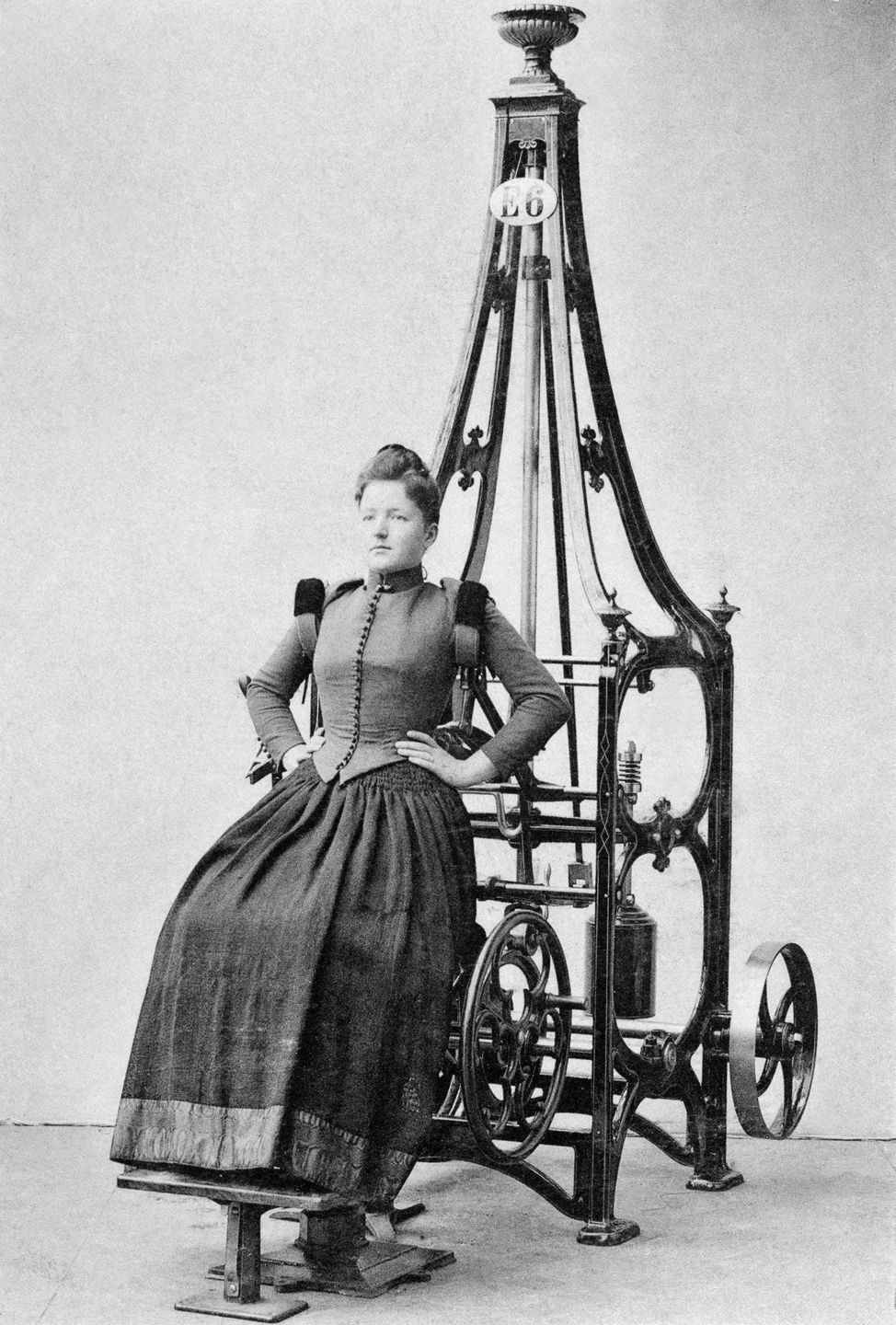Dr. Gustav Zander's institute in Stockholm, founded in 1865, could be called the world’s first gym. It was equipped with twenty-seven custom built machines that Zander’s patients exercised on. Zander claimed that his therapeutic machines could correct a range of physical deficiencies, impairments and ailments brought about by accidents of birth or by hard labor. A follower of the movement cure promoted by an earlier pioneer of exercise Per Henrik Ling, Zander argued that the key to health was not strenuous acrobatics but “progressive exertion”—the controlled, systematic engagement of the body’s muscles in order to build strength.

Shortly after becoming a licensed physician in 1864, Zander put his ideas into practice at a local Stockholm school by setting up prototype therapy machines for the students. His machines used weights and levers that could be pulled and moved to adjust resistance to suit each individual's strength. Another set of weights and levers compensated for the body or limb weight of the user. For those with paralyses or extreme weakness, motorized machines kept the affected muscles from atrophying.
After noticing a marked improvement in the strength and health of his subjects at the Stockholm school, Zander opened a Medico-Mechanical Institute in Stockholm to promote his machines. At first medical practitioners were skeptical of the claims for the new therapy, but as evidence of patient improvement mounted an increasing number of practitioners worldwide endorsed Zander’s therapy, enabling him to open a second Zander Institute in London.

Zander’s machines became a sensation at the 1876 Centennial and International Exposition in Philadelphia, earning him the award for best mechanical design. The rapid mechanization brought about by industrialization in the latter part of the 19th century saw an increase in the number of office workers, and Zander began to market his machines to this fast rising American business class. His machines offered, Zander explained to an American audience, “a preventative against the evils engendered by a sedentary life and the seclusion of the office.”
By the turn of the century, his machines could be found in health spas across the country, and at private institutes such as the one Zander set up near Central Park in New York. Access to these health machines was a mark of status that reflected a person’s leisurely lifestyles and exemption from physical labor.
After Zander’s death in 1920, his machines and his contribution to physical therapy were essentially forgotten, until these radical ideas were rediscovered in the last decades of the 20th century. His revolutionary ideas are once again receiving the attention and respect they merited.


















References:
# The Origins Of Cybex Space, Cabinet Magazine
# The Therapy Machines of Dr. Gustav Zander, NPS
# Dr. G. Zander’s Medico-mechanical Gymnastics, Smithsonian Institute
# Dr. Zander's exercise machines, Mashable












> Dr. Gustav Zander's institute in Stockholm, founded in 1865, could be called the world’s first gym.
ReplyDeleteI think the Greeks might take issue with that statement!